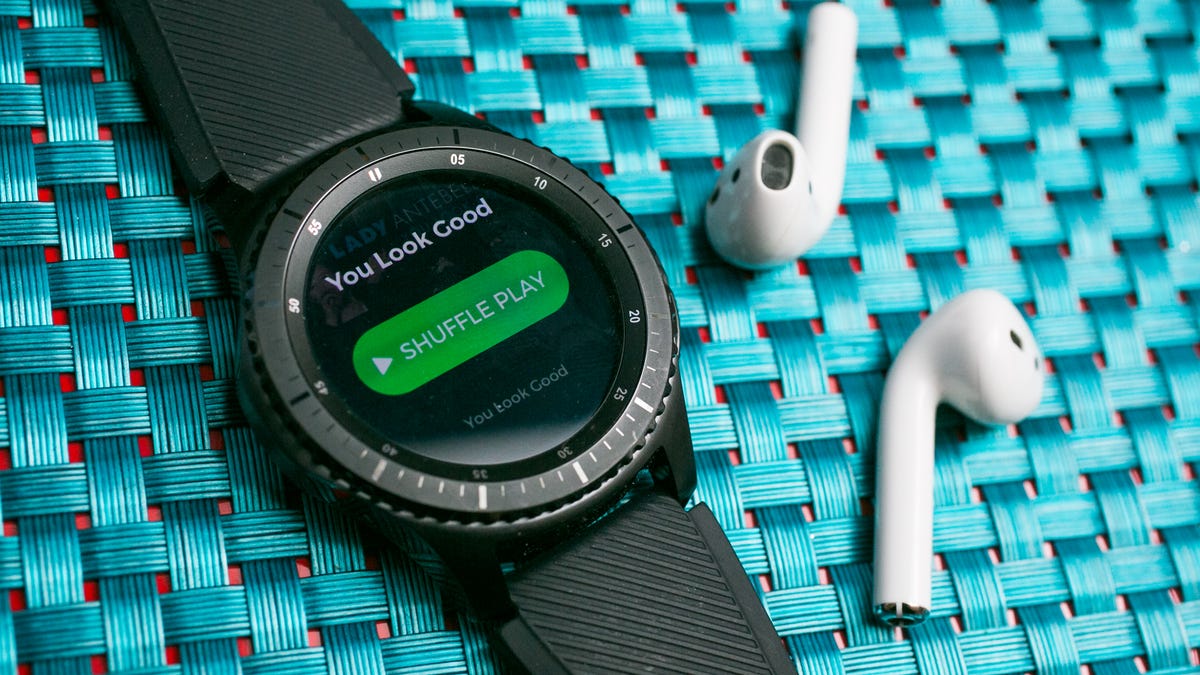Spotify could make a smartwatch, fitness band ... even earphones
Commentary: A job posting indicates Spotify hardware is coming. Would it go on ears, wrist, or possibly eyes?

Music-streaming company Spotify is looking to debut dedicated hardware, according to a job posting noticed by tech blogger Dave Zatz. The "Senior Product Manager" would work on a "category-defining product" akin to the Pebble Watch, Amazon Echo and Snap Spectacles, a cached version of the posting reads.
The idea of Spotify-dedicated hardware makes a lot of sense, for more reasons than you might think. In fact, Spotify's already been dipping its toes into wearable and fitness tech.
Spotify lives on smartwatches already
The Samsung Gear S3 has a Spotify app that streams music and was originally intended to store music locally for offline playback. An updated app for Google's Android Wear platform was also supposed to offer more independent music streaming and downloading options, but hasn't arrived yet. The Android Wear Spotify app is pretty basic, and just acts as a remote. But it shows Spotify has been exploring ideas already.
Pebble Core, the Spotify wearable Pebble never made.
Pebble almost made a Spotify product
Before Pebble was sold to Fitbit, the smartwatch company was also working on a standalone, GPS-enabled Android device called Pebble Core. Its big feature was supposed to be Spotify, streaming music and also playing back locally stored tracks for workouts. Pebble Core doesn't exist, but the basic idea still could be interesting.
Lifebeam Vi, AI-enabled fitness headphones that already have some Spotify integration.
Spotify is already exploring music and fitness
The Lifebeam Vi, a pair of fitness heart-rate enabled headphones I've been wearing over the last week, connects with Spotify to sync playlists for quick playback during workouts. According to Lifebeam CEO Omri Yoffe, whom I spoke with a couple of weeks ago, the longer-term goal is for Spotify's tracks to match up with your running pace to match your workout's intensity. Spotify could be developing that type of idea -- music that matches your workout -- in a future fitness wearable. It would be a great idea and something that doesn't exist right now.
Headphone + voice activated music makes sense
Consider Amazon Echo and Google Home. They're speakers with music-forward functions that make the most of voice commands.Why not a Spotify-type device, or maybe a pair of AirPod-like headphones that could call up playlists automatically? If Spotify's job listing is looking at voice services, an Echo-alike seems like an obvious direction. But maybe fitness headphones are a good fit, too, if Spotify's able to develop headphones that could locally store music for runs and use a voice interface to interact.
Spotify glasses? (Please, I hope not)
Spotify's job listing mentions Spectacles, but I sincerely hope that doesn't mean music glasses. Instead, it's likely that the idea of a dedicated wearable, tied into one app, is Spotify's hardware goal. Much like Spectacles are a perfect extension of Snap, a Spotify band could be a wearable remote for Spotify's music service. If someone can explain why something for music would be on my eyes, please do.
It's Complicated: This is dating in the age of apps. Having fun yet? These stories get to the heart of the matter.
Tech Enabled: CNET chronicles tech's role in providing new kinds of accessibility.

